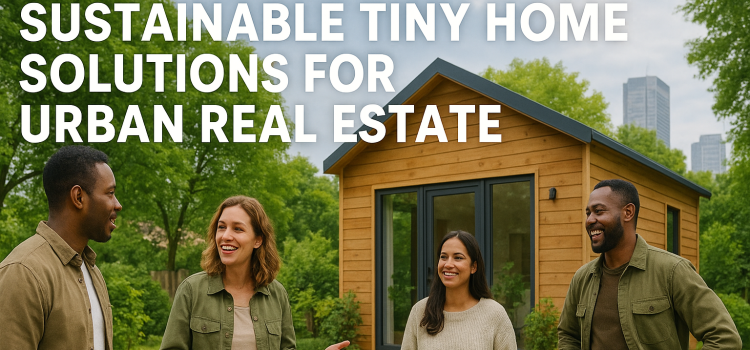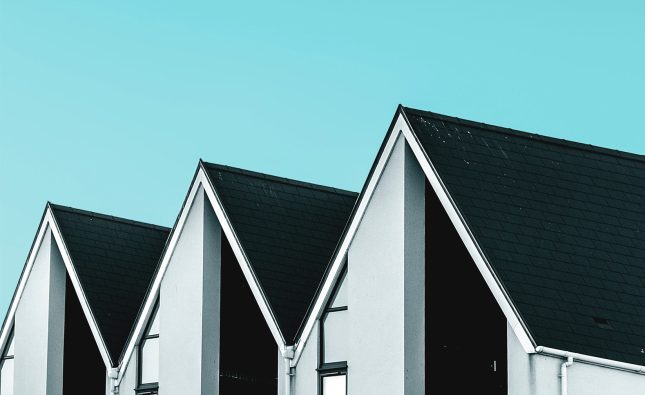
Introduction
As cities get bigger and more crowded, finding affordable housing is getting harder. One solution that’s gaining popularity is long term sustainable tiny homes. These small, eco-friendly homes are a great option for urban living, offering affordable and environmentally conscious solutions to the housing crisis.
In this article, we’ll explore how sustainable tiny homes can help solve some of the challenges in urban real estate. We’ll cover the benefits of tiny homes, their key features, and how they can fit into city environments.
What Are Sustainable Tiny Homes?
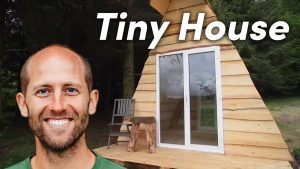
Sustainable tiny homes are compact houses built with the goal of using fewer resources and reducing environmental impact. Typically ranging from 100 to 400 square feet, these homes use eco-friendly materials and energy-efficient designs to make them as sustainable as possible.
Despite their small size, sustainable tiny homes are designed to be functional, cost-effective, and environmentally friendly. They offer a way to live in cities without the high costs and large environmental footprint of traditional homes.
Why Are Tiny Homes Becoming Popular in Urban Areas?
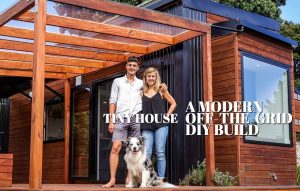
Urban areas are facing some big problems: high housing costs, limited space, and increasing environmental concerns. Sustainable tiny homes are helping to address these issues.
1. Affordable Housing
Housing prices are rising, making it difficult for many people to afford a home. Tiny homes are more affordable than traditional houses because they require less land, use fewer materials, and cost less to build. This makes them a great option for people looking for an affordable place to live in the city.
2. Eco-Friendly Living
Sustainable tiny homes are built to have a low environmental impact. They often feature energy-efficient appliances, solar panels, rainwater collection systems, and composting toilets. This makes them a great choice for people who want to reduce their carbon footprint while still enjoying city life.
3. Space Efficiency
Urban spaces are limited, and finding affordable apartments with enough space can be difficult. Tiny homes make the most of small spaces by using creative designs and multifunctional furniture. With these homes, you can live comfortably in a small area while still having everything you need.
4. Mobility and Flexibility
Many sustainable tiny homes are built on wheels, allowing owners to move their homes from one location to another. This flexibility is great for people who want to live in different parts of the city or even travel to new areas while still having a permanent home.
Key Features of Sustainable Tiny Homes
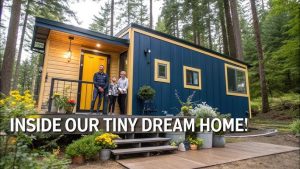
1. Energy Efficiency
Sustainable tiny homes are designed to use as little energy as possible. They often include high-quality insulation, solar panels, and energy-efficient appliances to help reduce energy consumption. By using less energy, these homes are both cost-effective and eco-friendly.
2. Eco-Friendly Materials
These homes are built with eco-friendly materials like reclaimed wood, bamboo, and recycled steel. Using these materials reduces the environmental impact of construction and ensures that the home is as sustainable as possible.
3. Water Conservation
Water conservation is another important feature of sustainable tiny homes. Many of these homes use rainwater collection systems, low-flow faucets, and composting toilets to reduce water usage. These systems help homeowners conserve water while tiny houses living sustainably.
4. Waste Reduction
Tiny homes often include features like composting toilets and greywater recycling to minimize waste. These systems help reduce the amount of waste that goes into landfills and make sustainable tiny homes more environmentally friendly.
How to Build a Sustainable Tiny Home in an Urban Area
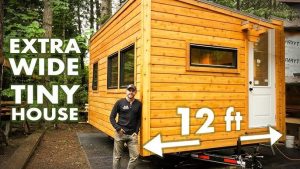
If you’re interested in building your own sustainable tiny home, here are some tips to get started:
1. Research Zoning Laws
Before you begin building, it’s important to research your local zoning laws. Some cities have restrictions on the size of homes that can be built, while others have relaxed their zoning laws to allow for tiny homes. Make sure to check with local authorities before starting your project.
2. Choose Eco-Friendly Materials
To make your tiny home as sustainable as possible, choose materials that are eco-friendly and durable. Use reclaimed wood, bamboo, and other sustainable materials to build the structure. These building materials are not only environmentally friendly but also add to the charm of the home.
3. Focus on Energy Efficiency
When designing your sustainable tiny home, make sure to prioritize save energy efficiency. Use high-quality insulation to keep your home cool in the summer and warm in the winter. Consider adding solar panels to power your home and reduce your reliance on fossil fuels.
4. Plan for Mobility
If you want the flexibility to move your tiny home, consider building it on wheels. This will allow you to relocate your home to different parts of the city or even explore new areas. Mobile tiny homes can be placed in various urban locations, giving you the freedom to live wherever you choose.
Future of Sustainable Tiny Home Living
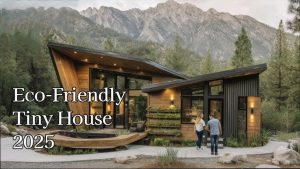
Looking ahead, tiny homes will become more streamlined and widely accepted in urban markets. Prefab modular designs will cut construction time and costs, making homes move-in ready. Standardized codes for tiny footprints and ADUs will spread across cities, simplifying permitting. Smart home tech—like remote-controlled HVAC and energy monitoring—will maximize comfort in small spaces. Co-housing models may pair tiny private units with shared kitchens and workspaces, blending privacy with community. As these trends grow, sustainable tiny homes will play a vital role in solving urban housing and climate challenges.
Comparative Table: Traditional Homes vs. Sustainable Tiny Homes
| Feature | Traditional Homes | Sustainable Tiny Homes |
|---|---|---|
| Size | 1,000 – 2,500+ square feet | 100 – 400 square feet |
| Cost | High, due to land and construction | Low, affordable, cost-efficient |
| Energy Consumption | High | Low, energy-efficient design |
| Environmental Impact | High, uses more resources | Low, uses sustainable materials |
| Maintenance | High, larger space to manage | Low, easy to maintain |
| Mobility | Fixed location | High, especially for mobile units |
| Water Usage | High | Low, water-saving systems |
Conclusion
Sustainable tiny homes offer an innovative and affordable solution to urban housing challenges. With their focus on eco-friendly materials, energy efficiency, and space optimization, these homes are perfect for urban living. As cities continue to grow, tiny homes can help reduce impact on the environment while providing affordable living spaces for those in need.








